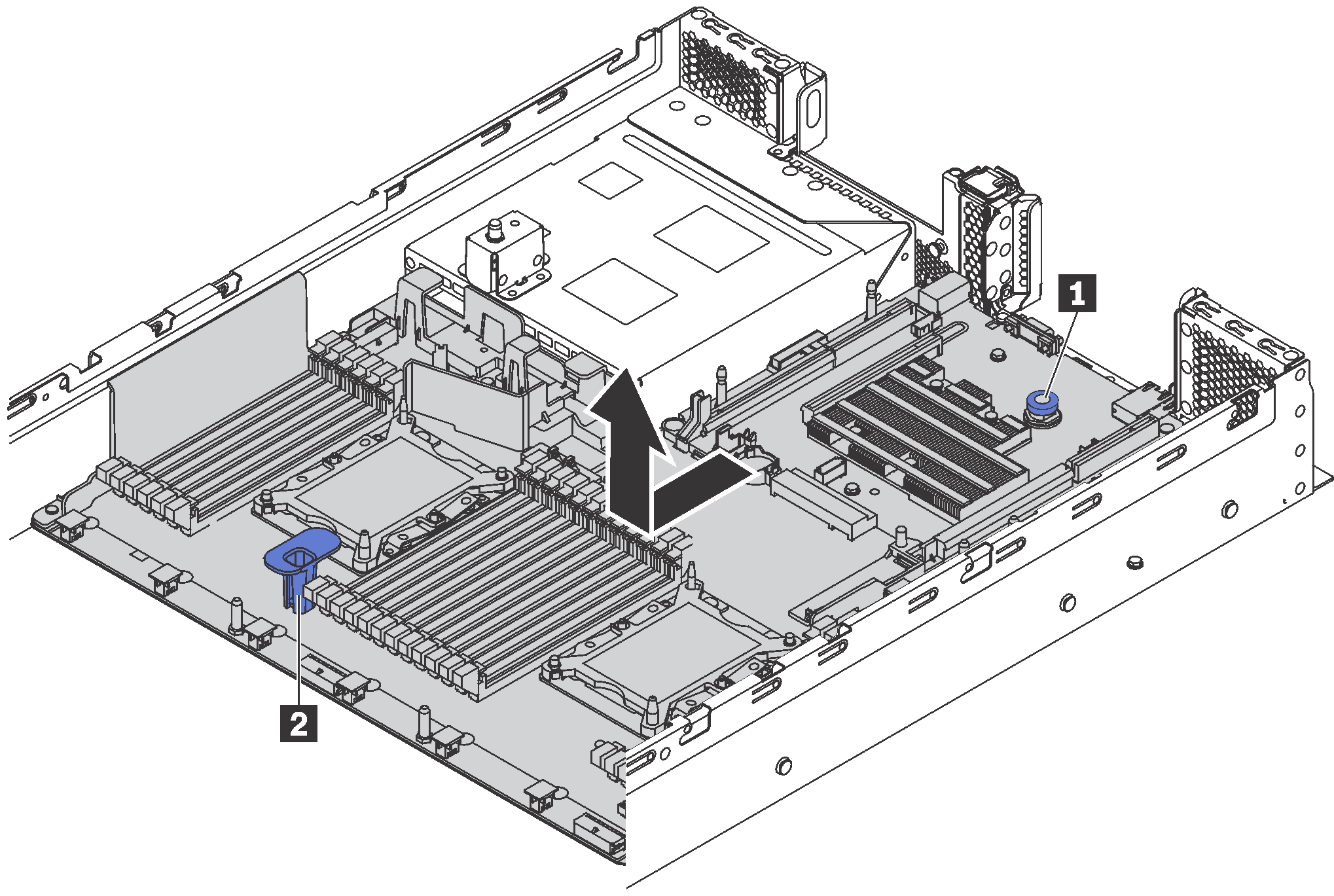Remove the system board
Use this information to remove the system board.
Remove the top cover. See Remove the top cover.
Remove the air baffle. See Remove the air baffle.
Remove the system fan cage. See Remove the system fan cage.
Record where the cables are connected to the system board; then, disconnect all the cables.
AttentionDisengage all latches, cable clips, release tabs, or locks on cable connectors beforehand. Failing to release them before removing the cables will damage the cable connectors on the system board. Any damage to the cable connectors may require replacing the system board.Remove any of the following components that are installed on the system board and put them in a safe, static-protective place. See the related topics in this chapter.
memory modules
LOM adapter
M.2 backplane
TCM/TPM (for Chinese Mainland only)
CMOS battery
RAID adapter on the RAID adapter slot
PCIe adapters
Riser assemblies
Rear hot-swap drive assembly
PHM
ImportantDo not disassemble the PHM.
Pull out the power supplies slightly. Ensure that they are disconnected from the system board.
To remove the system board, complete the following step:
Watch the procedure
A video of this procedure is available at YouTube.

If you are instructed to return the old system board, follow all packaging instructions and use any packaging materials that are provided.
Take a dust cover from the processor socket assembly on the new system board and orient it correctly above the processor socket assembly on the removed system board.
Gently press down the dust cover legs to the processor socket assembly, pressing on the edges to avoid damage to the socket pins. You might hear a click on the dust cover is securely attached.
Make sure that the dust cover is securely attached to the processor socket assembly.
If you are planning to recycle the system board, follow the instructions inDisassemble the system board for recycle for compliance with local regulations.


